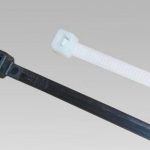We may receive a commission when you use our affiliate links. However, this does not impact our recommendations.
Cutting joinery by hand isn’t a romantic journey to the charms of bygone days. For me, it’s a way to obtain better results in less time. I got tired of fiddling with table saw setups and making test cuts. I didn’t like dealing with cuts that were sometimes great and sometimes had a ragged edge or a chip of missing material somewhere. I especially didn’t like forgetting which side was up while cutting a bunch of rails and missing a haunch every now and then.

When you start using hand tools this way, it doesn’t take long to realize that matching the tool to the task is the essential element of efficiency. The chisel that works so well to clean a dovetail socket isn’t so good at squaring the corner of a mortise, the dovetail saw still makes a nice cut on a tenon’s shoulder but all those itty-bitty teeth make it take forever, and there isn’t enough reach to cut all the way down on the cheeks. When you make bigger-scale joints, you need a bigger saw.

A couple years ago, Veritas the manufacturing division of Lee Valley introduced an odd-looking dovetail saw. Instead of a metal back, a black composite (combined of stainless steel powder, glass fiber and polymer resin) is molded over the blade and flows into the open wood handle. The innovative design allows for manufacturing efficiencies and a very reasonable price. I think it’s a great saw to try if you want to explore hand tool work on a budget. It’s also a great saw to keep using as your skills develop-its performance is quite close to that of more traditional saws that cost twice as much. A couple weeks ago, Lee Valley introduced a larger version, called the Veritas Carcase Saws.

That’s one of the new carcase saws at the top of the picture, and one of the original dovetail saws below. I’ve been using both the rip and cross-cut versions and I like them. The handles fit the hand comfortably, and the saws are nicely balanced and ready to use out of the box. The extra length and depth allow for cutting larger joints, and these larger versions perform as well as their little brothers. Because of the tooth count however (12ppi for the rip saw and 14ppi for the crosscut) they are a bit slower than most saws of this type. There is always a compromise to be made in this area; fewer teeth will work faster, more teeth will take longer but leave a finer cut. Veritas tools usually are engineered to the finer cut side of the equation, and that’s a difference, not a defect. The rip version has a cutting depth of about 2 3/8″ so it can bottom out in a really long tenon. Maybe (hint, hint Mr. Lee) a slightly larger tenon saw (with more aggressive teeth) will be introduced in the future.
For the money, ($69.00 each) you can’t go wrong. That’s a good investment whether this is your first saw, your go to saw, or your reserve saw. If you buy the pair, you can save $20, and until November 30, 2010 you can get the pair for $99.00.
–Robert W. Lang
Here are some supplies and tools we find essential in our everyday work around the shop. We may receive a commission from sales referred by our links; however, we have carefully selected these products for their usefulness and quality.








I can’t remember exactly where I saw it, but I’m pretty sure Rob Lee has already indicated that they will be doing tenon saws. Apparently there is a limit on how long they can make their backs though…so don’t expect any monster 19" saws.
The saws are listed as 12 and 14 TPI, which is 13 and 15PPI. For 11" long carcass saws, that is certainly not fine; right in line with what Wenzloff, Bad Axe, and Adria (for example) are offering at that size.
Bob,
Do you layout each piece for joinery when using power tools?
I have found that my work flow is almost uninterrupted when using hand tools. I do all my layout/knife work then go right to cutting. As you said, no more fussing with fence set ups and test cuts.
Even when doing multiples,with practice,I am almost as efficient with my saws and chisels as I was with the tablesaw and other power tools.
I also find the rhythm of hand tool working helps to reduce the stress I used to feel using power tools.
Thanks for the review. I am impressed with the innovations from Mr. Lee and others. However, Mr. Wenzloff currently has ties to my pocketbook at the moment.
F.